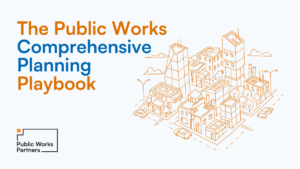A city charter is a document that functions somewhat like a constitution for the city. It enshrines certain functions of government and sets the rules for elections, land-use, and city government agencies. As cities innovate and change to better meet the needs of their communities, charters can quickly become relics of bygone times. To ensure city governments keep up with changing times, some cities, like Baltimore, have implemented required charter reviews every ten years. New York City has maintained an as-needed review process. In 2019, a city charter review commission was created in a partnership between the mayor’s office, the city council, and other key administration officials in the New York City government to completely review the city charter and recommend changes.
This review commission was made up of 15 experts in city government appointed by city government officials. They held a number of public hearings and a series of sessions and came up with almost 1000 initial recommendations for charter review possibilities. Eventually, they settled on five main questions and 19 different proposals for changing New York City government. Five of these made it onto the ballot and all were approved by voters. The most well-known of these was the ranked choice voting option in city elections. This innovation allows people to rank up to five candidates in order of preference and the candidate who earns more than 50% of the first-choice votes is declared the winner. In this style of election, candidates are systematically eliminated one-by-one based on who receives the fewest first-choice votes until two candidates remain. First-choice votes going to candidates who have been eliminated will automatically be changed so that the next-ranked eligible candidate on that ballot receives that vote. The end result of this system is that voters can vote for candidates they may not think will win, but they prefer.
The New York City charter has been revised five times since it was enacted 1898. Key takeaways from these revisions include the creation of the City Council, Community Boards, the ULURP process allowing communities to participate in zoning and permitting processes, and, most recently, the ranked choice voting change. Each of these examples exhibit how community-oriented thinking in the charter review can make city government more accessible to the communities it serves.
Alongside ranked choice voting, this most recent charter review process led to expanding and ensuring funding for the police use-of-force review board, reconfigured the Conflict of Interest board for city government officials to prevent a lobbying revolving door, made legal a “rainy day” fund for the city budget, and tweaked the land-use process for development projects.
While these changes are minor, their impact can be significant for certain communities. For example, ranked-choice voting allows for more competitive elections by reducing the binary choices in election cycles and allowing people to vote for third-party or alternative candidates while still having their voice heard if their preferred candidate is not successful electorally. The use-of-force review board changes help secure the board’s funding and staffing even if the mayor elects not to support the board–as the board’s funding is tied to the city’s policing budget and it can appoint new members itself even if the mayor declines to do so.
The process through which New York reviews its charter is itself a significant tool for continued democratic innovation. The charter amendments are voted on by community members as referenda. This allows community members to be the final arbiters for the implementation of these changes. The democratization of this decision making process connects community members with the functions of their city government. Furthermore, the charter commission itself took seriously the process of stakeholder engagement, hosting town halls in each of the five boroughs and ensuring online feedback was collected on potential ballot initiatives. The city’s engagement succeeded in enhancing public participation by utilizing key components of equitable community engagement.
However, the process could have been improved by designing an engagement strategy that allowed for more inclusive participation through increasing digital access and building more open forums for feedback beyond town halls. In our work with the NYC DOT’s Streets Plan, we engaged community members on multiple levels and via multiple different modalities. We used a survey platform to collect over 12,000 survey responses, collected information from both public and recruited focus groups, conducted opinion polling focused on hard-to-reach community members. While the NYC charter commission could have adapted some of these modalities to enhance their outreach, the charter commission still showed a commitment to community involvement in key changes to city government by implementing a generally successful engagement strategy.
City charters can be a place for democratic stagnation–holding cities back from innovating by enshrining restrictive or outdated government rules and structures–or they can be used to innovate and make cities more accountable to their citizens. New York City’s 2019 charter review took seriously the latter goals sought to create a culture of democracy in the city that will set our communities and our government up for success in the future.





 Public Works Partners is a WBE/DBE-certified urban planning and consulting firm. Our expertise lies in creating innovative, equitable, and sustainable solutions to complex problems.
Public Works Partners is a WBE/DBE-certified urban planning and consulting firm. Our expertise lies in creating innovative, equitable, and sustainable solutions to complex problems.